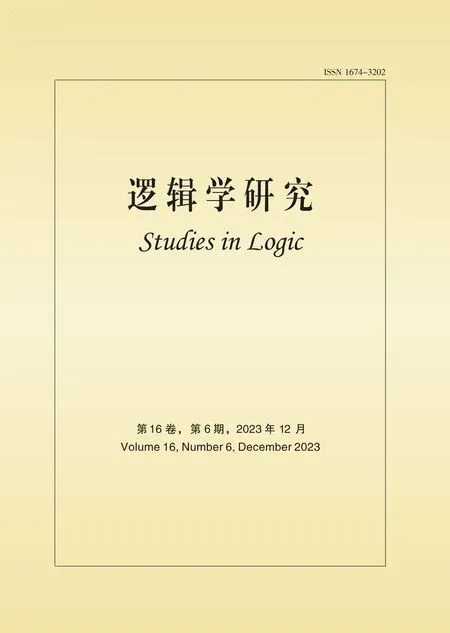A Pragmatic Account for the Categorical Exchange between Content and Context*
Yang Hu
Abstract. One of the essential issues in indexical semantics is how the context determines indexical semantic content.The essence of the problem consists in how categorically contextual entities can be exchanged for categorically semantic entities via semantic theory.Under Kaplan’s two-dimensional semantic framework,“character” as a lexical rule is the key to realizing this exchange with,however,theoretical difficulties.On the basis of Verschueren’s idea of pragmatics and his Contextual Diagram,“ε-General Condition” and “ε?-Pragmatic Schema” provide a pragmatic account for such categorical exchange between context and content.Given “Corresponding Point” and “Distance Function”,two exchange models are proposed: “Impartial Exchange” and “Partial Exchange”.Both of them suggest a way of understanding what is meant by “contextual interpretation of indexical semantic content”.Several issues will also be discussed regarding this pragmatic account.
1 Indexical Context and “Categorical Exchange” Problem
Words such as “I”,“now”,“today”,and etc.are indexicals.Indexicals are context-sensitive expressions.We can thus call the context determining the semantic content of indexicals “indexical context”.Historically,philosophers of language and logicians are concerned with the indexical context on accounts of its essential role in securing semantic content.
Burks([3])and Bar-Hillel([2])are the pioneers of theories of indexicals.The former studies the indexical meaning for the first time within Frege’s framework of sense/reference and defines the indexical context as “the spatial,temporal or spatiotemporal location”;the concept of “pragmatic function” proposed by the latter can be seen as the prototype of Kaplan’s notion of “character”.In the 1950s and 1960s,the notion of “intensional semantics” arising from Carnap([4]),Hintikka([7,8,9]),and Kripke ([11,12]) reforms both the notions of semantic value and context: the semantic value of a given expression is no longer just its extension but a function from possible worlds (as contextual parameters) to extension.Montague ([13,14])introduces intensional semantics into the formal study of natural language,and his proposed notion of indexical context is an index set which consists of a series of coordinates (such as speaker,time,place,and possible worlds,etc.).The index set determines the semantic value of indexicals.
More importantly in this theoretical thread,Kaplan ([10]) puts forward a twodimensional semantic framework for dealing with indexical semantics.This framework identifies two sorts of the indexical meaning: “character” and “content”.The former refers to the conventional meaning of an indexical,and the latter refers to the reference obtained by the indexical in a given context.Kaplan’s indexical context is similar to Montague’s index set,and we can call it “parameters set” which consists of a series of parameters (such as speakers,time,place,and possible worlds,etc.).However,the parameters set differs from the index in that it has a dual role in indexical semantics.It plays the first role as “context of use” in securing the semantic content of indexical for a given sentence containing them to express propositions.It plays the second role as “circumstances of evaluation” in evaluating the truth value of the propositions expressed by the sentence.In this sense,Kaplan’s two-dimensional semantics can be recapitulated as two steps:
By the first step,the semantic content of an indexical is secured as the output of the “character” function which takes the context of use as the input.By the second step,the truth value of the sentence containing the indexical is determined as the output of the “content” function which takes the circumstances of evaluation as the input.Obviously,both “character” and “content” play the role as distinct functions in Kaplan’s two-dimensionalism.1One of the reasons that distinguish the two steps in Kaplanian semantic process lies in the need to evaluate the sentences such as “I am here now”.It is always true when uttered(relative to any context of use),but from a modal point of view it is not necessarily true.Why does it maintain truth when spoken but lack of modal certainty? Kaplan’s two-dimensionalism offers a way of addressing this problem.The first step contributes to making the sentence become a truth-evaluable proposition(the content),and the second step aims to assign a truth-value within specific modal circumstances of evaluation.
If we focus on the first step,it involves one of the essential problems in all the theories we mentioned above of the indexical context: how is the semantic content of an indexical determined by the indexical context? This is the fundamental question of any semantic theory of indexicals.Here,we lead our attention to the assumption of this fundamental question,and it could be found in Cresswell([5],p.109):
“Our theory of meaning has been based on the assumption that the entities which are the values,in a given model,of expressions in functor categories are determined by the entities which are values of expressions in the basic categories.”
As far as we are concerned,the notions,such as “entities”,“functional category” and “basic category”,mentioned in this passage can be exploited to suggest a new way of formulating the aforementioned fundamental question for indexical semantics.It seems reasonable to say that,for Kaplan’s two-dimensional model,the semantic content corresponds to the “functional category”,and the indexical context corresponds to the “basic category”.The Kaplanian process of “contextual interpretation of indexical semantic content” can thus be regarded as one in which certain entities in the context category is “exchanged” for certain entities in the (semantic)content category.2If Kaplan gives the direction of exchange from context to content,Stalnaker’s theory of context,namely “context-as-common ground”,proposes a reverse direction of exchange from content to context:once semantic content is asserted,it would be added in the context set.See Stalnaker([19],pp.46-50)for details.Additionally,this reformulation of the problem concerning the contextual interpretation of content is necessary and reasonable since it can squarely delimit the notion of “contextual interpretation” involved here.By our reformulation,what is focused on by “contextual interpretation” only refers to the categorical exchange between the contextual entities and (semantic) content entities in terms of indexicals.Obviously,Kaplan propounds a kind of the categorical exchange by virtue of the lexical role of character.In this sense,his theory can be termed as “l(fā)exical account”.In this paper,we aim to come up with a pragmatic account which is expected to accommodate and enrich the lexical account.
We first in Section 2 review and analyze Kaplan’s lexical account.Then,in Section 3,based on the basic ideas of Verschueren pragmatics and his Context Diagram for characterizing the “context of situation”,a pragmatic account will be given.The key to this account lies in two theoretical constructs: “ε-General Condition” and “ε?-Pragmatic Schema”.This account helps to further establish two models of categorical exchanges between “content” and “context” in Section 4: Impartial Exchange and Partial Exchange.They contribute to clarifying what is meant by “contextual interpretation of indexical semantic content”.In Section 5,six issues relevant to this pragmatic account will be discussed.
2 The Lexical Explanation of the Categorical Exchange
Obviously,in Kaplan’s two-dimensional framework,it is the character,lexical meaning of indexicals,that provides the rule for the categorical exchange between “context” and “content”.It tells us how to obtain the semantic content of an indexical from its context of use,making the categorical exchange possible.This is what is suggested by the first step in Kaplan’s framework.Although the character can play the role as a lexical rule in guiding the category exchange,it is unavoidably inadequate for fully achieving such an exchange.
First,the character of true demonstratives is notoriously deficient for a categorical exchange between its context of use and semantic content.It is well known that Kaplan’s indexicals comprise pure indexicals and true demonstratives.If we say that pure indexicals such as “I” and “today” can directly achieve the categorical exchange in light of their character,true demonstrative,such as “there” and “you”,cannot do the same until the utterer’s intention-guided demonstrative acts are also considered.In this sense,the character is not sufficient to fully achieve the categorical exchange.
Second,although the character plays the role of directly facilitating the category exchange in terms of pure indexicals,due to no consensus on the scope of pure indexicals,the scope over which such a role of the character can stretch is not clear.Kaplan([10],p.491)enumerates “I”,“now”,“here”,and “tomorrow” as classic pure indexicals;Perry([15],p.978)labels “pure indexicals” as “automatic indexicals” and only regards “I”,“today”,“yesterday”,and “tomorrow” as the epitomes;following Perry’s terminology,Bach([1],p.161)limits the cases of automatic indexicals only to “I” and “today”.
It is,however,more important to get clear about why it seems difficult to delineate the scope of pure indexicals.The reason just lies in the fact that we do not know exactly which indexicals can only use their character to achieve the category exchange.Thus,it is the functional scope of the character that is accountable for delimiting the scope of pure indexicals.Perry(ibid.) argues that “with‘now’there is a question of how long an interval of time is counted as the present moment;with‘here’there is a question of how much of the surrounding territory is included.” Obviously,these questions cannot be answered by their character alone,and utterer’s intention also counts.This means that “now” and “here” cannot only use their character to directly realize the exchange between their context of use and semantic content.Thus,Perry disqualifies them as “automatic indexicals”.Since non-lexical factors such as utterer’s intention profoundly affect the categorical exchange between “context” and “content”,the limitation of lexical explanation is here clearly shown.It is this that motivates us to seek an alternative account from non-lexical perspective.
3 A Pragmatic Account
As is just said above,our intended pragmatic account,in contrast to the lexical one,primarily focuses on addressing non-lexical factors(such as the role of utterer’s intention)that influence categorical exchange.Admittedly,the utterer’s intention is messy and knotty.To claim that it is manageable in just a theoretical account seems intelligibly far-fetched.Thus,if our approach can be a must compared to the lexical one in terms of the utterer’s intention in question,it means just that it is a must to some extent(the last section will elaborate it).Now,let us first delve into the question of justification: why can we say that our account is technically and philosophically indispensable to some extent?
3.1 Justification for Our Pragmatic Account
The justification for our pragmatic account is based on three theoretical requirements.We expect them to demonstrate how our theory enhances the approach (as proposed in the lexical account)to addressing the issue of categorical exchange.Furthermore,this paper will show that these requirements can be fulfilled.
Technically,a clear “mathematical” description is required to establish the technical distinctiveness of our account.However,we do not unreasonably assume that a purely mathematical explanation of the utterer’s intention in the categorical exchange between content and context can be constructed.This technical requirement is indeed realistic;we simply need to enhance the explicitness of the role through our novel technical notions.We will demonstrate later that this requirement can be fulfilled.
From an application perspective,our account is required to analyze specific cases and elucidate the extent to which the utterer’s intention influences the categorical exchange therein.These cases encompass not only those that can be accommodated within a lexical framework but also those that present challenges for it.In addressing the latter,the role of utterer’s intention assumes paramount importance,which will primarily be demonstrated in the subsequent section.
The third requirement holds utmost significance: our account needs a suitable notion of context as its conceptual foundation.This choice is deemed appropriate due to(1)its alignment with Kaplan’s parameters-set notion,(2)its promising technical contribution to our account,and(3)its theoretical desirability in addressing the intention problem.Such a notion can be found in Verschueren’s pragmatics.
The core principles of Verschueren’s pragmatics emphasize the interadaptable relationship between contextual correlates and language use in communication.The so-called “contextual correlates” are based on Verschueren’s notion of context.Context is here construed from three worlds: the social world,the physical world,and the mental world ([21],pp.74-77).From Verschueren’s pragmatic outlook,any occurrence of semantic event(such as the production of utterances with semantic content)takes place against a background of verbal communication,where semantic content is generated,transmitted,and comprehended between interlocutors.Moreover,Verschueren’s pragmatics considers verbal communication as the process through which the utterer and interpreter exchange the information about these three worlds.In this regard,semantic content can be considered as the shared information concerning the contextual aspects in communication.Therefore,it seems that the categorical exchange between “context” and “content” can be understood within such a communicative framework.In this sense,our approach to the categorical exchange is pragmatic.
Additionally,we adopt a somewhat audacious approach to interpreting the threeworlds notion of context (as acknowledged by an anonymous referee) in order to establish this notion as the foundation for characterizing the categorical exchange between context and content.After all,according to Verschueren,language use can be theorized independently from semantic content.However,our interpretation is reasonable.First,it is compatible with Kaplan’s parameters-set notion of context.More details will be elaborated in Section 5,but the crucial point to be highlighted here is that,irrespective of diverse notions of context and language usage,when it comes to linguistic indexicals,the presupposition of the interaction between context and its semantic content is nearly universally assumed by all indexical theories.It would be questionable to exclude Verschueren’s notion of context from contributing to this kind of interaction.Second,from a technical point of view,Verschueren’s notion of context and his subsequent Context Diagram(shown later)offer a suitable framework for developing “ε-General Condition” and “ε-Pragmatic Schema”(shown later).Third,though Verschueren’s pragmatics may not focus on the interaction between context and semantic content in terms of indexicals,his theory of context have theoretical desirability(and even fruitfulness)for addressing the problem of utterer’s intention evoked by some indexicals,partly because his context involves the mental world where utterer’s intention occurs.This point will become clear in Section 4.Taking these 3 points together,we think that Verschueren’s three-worlds notion of context so interpreted is reasonable for our theoretical purpose.
Based on the three-worlds notion of context,we now turn to the two pillars of our pragmatic account.
3.2 “ε-General Condition” and “ε-Pragmatic Schema”
What is below can be called Verschueren’s Context Diagram:3See Verschueren([21],p.76).We simplify and make some changes to his original diagram in order to illustrate our pragmatic account.But the diagram presented here is still consistent with his original theoretical intent.

Figure 1: Verschueren’s Context Diagram
The four horizontal dotted lines divide the context into three worlds,which can be represented by three sets S,P,and M.Each set consists of contextual entities instantiating “context” category.Of course,these three worlds are not independent of each other,and that is why we use dotted lines to separate them.The two rectangles represent the semantic entities set.TheUset includes the semantic entities denoted by the utterer’s utterances of indexicals and the I set incorporates the semantic entities involved in the interpretation of the utterances by the interpreter.They are semantic entities that instantiate(semantic)“content” category.Obviously,both sets coincide with the three-worlds sets.The gray rectangle represents the intersection of the two setsUand I,which can be called “common ground”4A series of works by Stalnaker ([18,19]) propound a presupposition theory of context,in which the context is defined as “common ground”: the commonly presumed information between the communicative parties at a given moment.Two remarks need to be made clear.First,common ground is a propositional attitude concept and it reflects the common acceptance of shared presuppositions between the communicative participants.Here,what the participants commonly accept can be their common beliefs,pretense,doubts,hopes,etc.about their presumed information.Second,the common ground has an iterative structure.A proposition is the common ground between you and me if we all accept it (for a particular communicative purpose),and we all accept it that we accept it,and so forth.In a verbal dialogue,if “the indexical ‘he’ refers to Wang Ming” is a common ground between the participants,and they commonly accept this proposition,and this “common acceptance” has an iterative structure.Glanzberg([6])takes Stalnaker’s common ground theory and the parameters-set theory in the Montague-Kaplan-Lewis tradition to be two main philosophical theories of context.Here we use the “common ground” in Stalnaker’s sense.in which successful verbal communication takes place.
Given this diagram,all semantic entities fall within the scope of contextual entities,and any semantic entity is a contextual entity.This is one of the conditions for the exchange between semantic “content” category and “context” category.It can be called “ε-Condition 1”.Assume thatαis any semantic entity,then we have what is in the below:
ε-Condition 1 excludes the following shaded area A and B in the Figure 2:
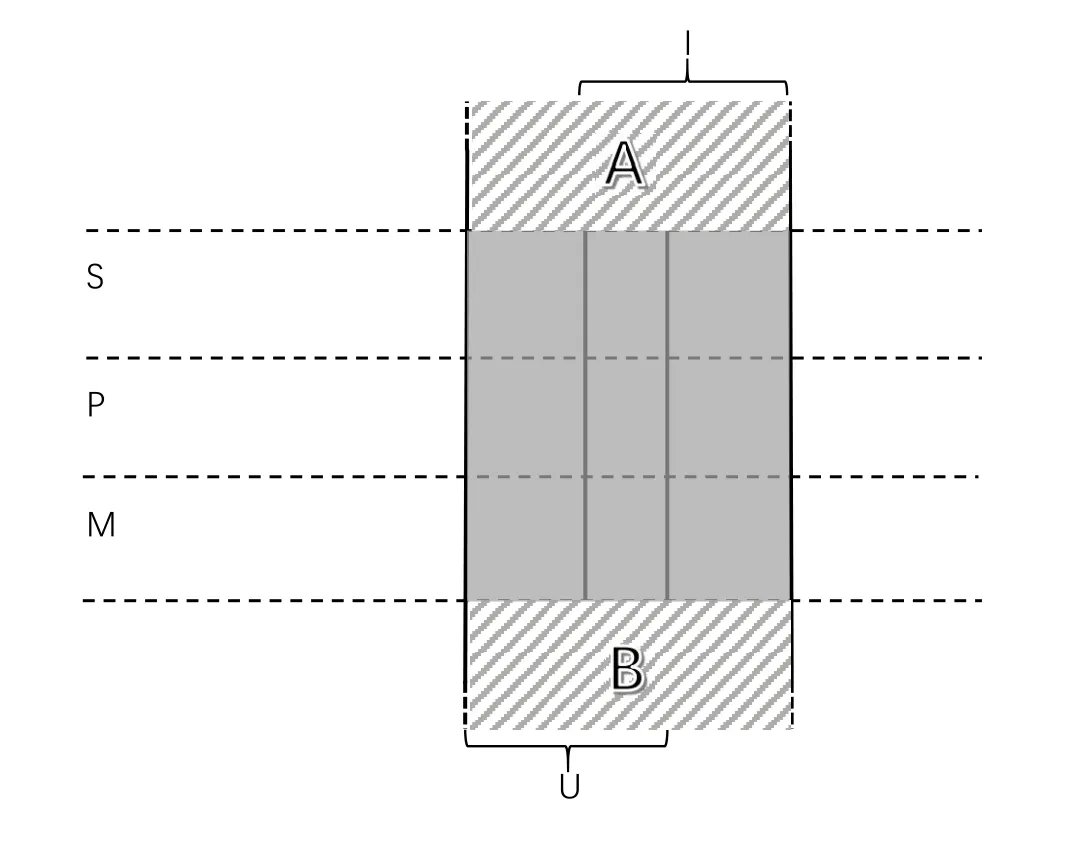
Figure 2: The Excluded Area A and B
Note thatAandBare two infinite subsets of the infinite set of semantic entities(UUI),and we have thus the following:
Theε-Condition 1 guarantees that there is no semantic entityβsuch thatβ ∈A∪B.In other words,a semantic entity cannot “escape” from the above three worlds.Looking back at the main question we raise in this section,that is,why the entities in contextual category can be exchanged for the entities in the semantic category;however,ε-Condition 1 answers why semantic entities can be exchanged for contextual entities.In this sense,theε-Condition 1 seems like a “windfall”.The answer to our main question rests on Verschueren’s generative understanding of the context:context is “not purely a reality’out there”,([21],p.109).The ongoing verbal communication means the generation of semantic entities,which simultaneously creates the existence of contextual entities.There are thus not contextual entities other than semantic entities.When I say: “I am writing”,the entity which can exist as contextual category (not as other categories) depends on the generation of the semantic entity produced when the utterer says “I”.This kind of “generation” always corresponds to the fact that both the utterer and interpreters recognize the appearance of “I” as a “semantic event”5“Semantic events” are part of “manifest events” in the sense of Stalnaker ([19],p.47).It refers to “something that happens in the environment of the relevant parties that is obviously evident to all.” Obviously,the utterance of “I” itself is the manifest event here.that needs to appeal to the context.This becomes the condition for how the contextual category is exchanged for the semantic category,which we can call “ε-condition 2”.Supposeβis any contextual entity,then we have what is in the below:
This condition excludes the following shaded areaCandDin the Figure 3:

Figure 3: The Excluded Area C and D
Note thatCandDare two infinite subsets of the infinite set of contextual entities(S ∪P ∪M),and we have thus the following:
Theε-Condition 2 guarantees that there is no contextual entityγsuch thatγ ∈C ∪D.In other words,the existence of contextual entities cannot “escape” from the semantic entities communicated between the utterer and interpreters.
By combiningε-Condition 1 andε-Condition 2,we obtain the general condition for the mutually categorical exchange between (semantic) “content” and “context”:“ε-General Condition”.Suppose that for any entityαin the semantic category there is an entityβin the context category(or,for any entityβin the context category there is an entityαin the semantic category),and we label the mutual exchange between the two as “α ?β”.By “ε-total condition”,we have what is in the below:
This condition reflects the basic scene of the categorical exchange,and it can be visualized by what we may call “ε-Pragmatic Schema”:

Figure 4:ε-Pragmatic Schema
Theε-Pragmatic Schema shows that no semantic entity is outside the contextual entity,and vice versa.By exploiting the Verschueren’s pragmatics in which verbal communication and context are understood in a particular way,we can propose a pragmatic account for the categorical exchange between (semantic) “content” and “context”.
4 Two Models of the Categorical Exchange: Impartial and Partial
In line with this pragmatic account,two models of the categorical exchange can be characterized: Impartial Exchange and Partial Exchange.Some conceptual preparations are in order.
4.1 “Corresponding Points”,“Distance Function” and “ε?-Pragmatic Schema”
First of all,in the previous discussion,given the semantic entity set defined on UUI and the contextual entity set defined on SUPUM.We assume that all elements in the two sets correspond to the areas shown in theε-Pragmatic Schema.Now,withε-General Condition andε-Pragmatic Schema,we define a corresponding functionf,the domain of which is any element of the semantic entity set or contextual entity set,and the range is the “point” on theε-pragmatic schema.Suppose there is a semantic entityαand a contextual entityβ,then there is a corresponding function:
We takef(α) andf(β) on theε-Pragmatic Schema to be the “corresponding points” ofαandβ,which transforms our discussion of semantic and contextual entities into that of the corresponding points on theε-Pragmatic Schema.In other words,ε-Pragmatic Schema is composed of these corresponding points.Selecting any semantic entityαand contextual entityβ,we can find their corresponding pointsf(α)andf(β)on the schema.Theε-Pragmatic Schema containing corresponding points defined as such can be called “ε?-Pragmatic Schema”.For example:
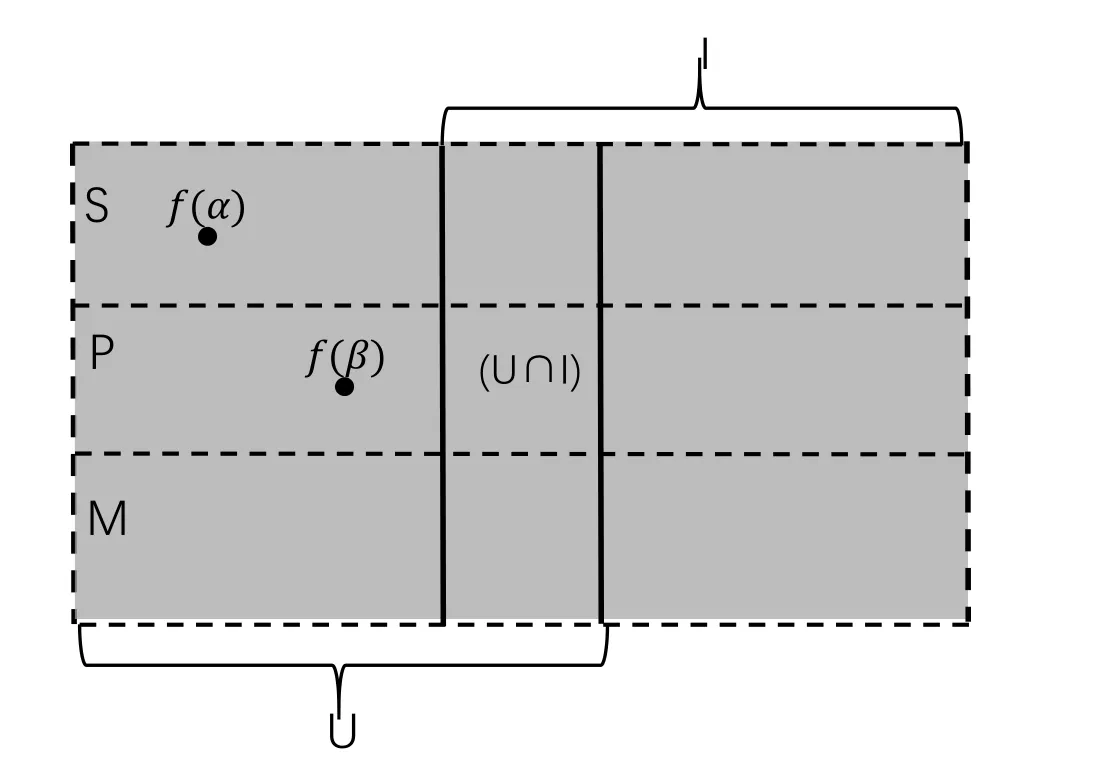
Figure 5:ε?-Pragmatic Schema
Next,we putε?-Pragmatic Shema into a coordinate system with the horizontal axisxand the vertical axisyto define a corresponding point.In so doing,we obtain a new schema:ε?-Pragmatic Schema:
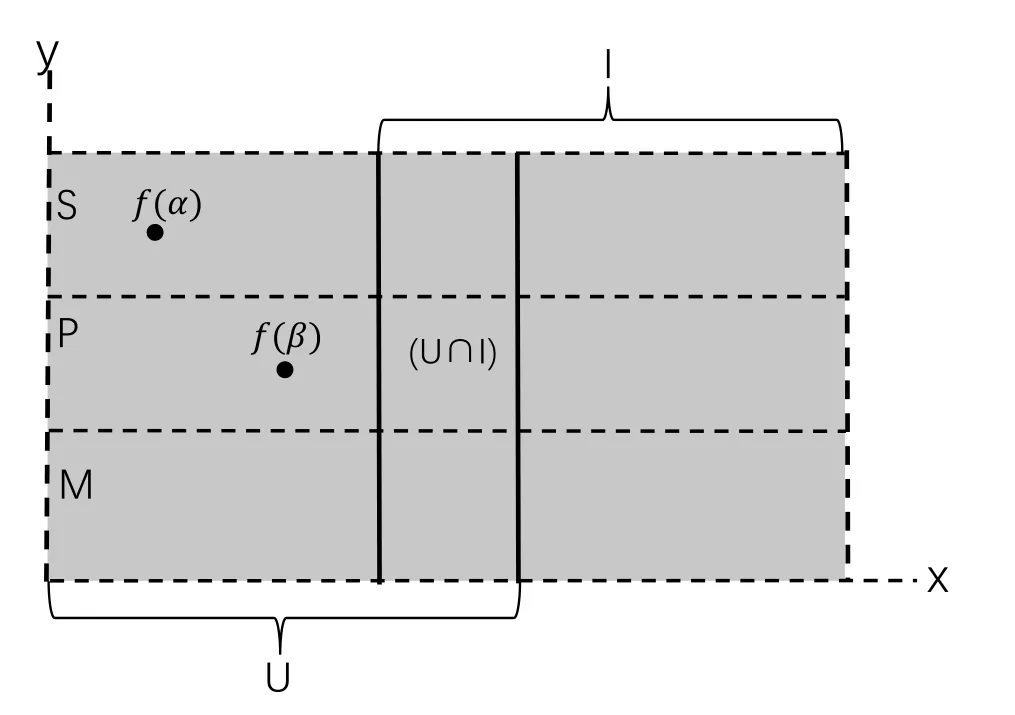
Figure 6:ε?-Pragmatic Schema
Clearly,the corresponding points are determined by the values defined on thex-axis andy-axis of the coordinate system(we shall clarify how the “values” can be intuitively understood in Section 5).We stipulate that any corresponding point on theε?-Pragmatic Schema is determined by specific coordinates(x,y).Thus,we have the coordinatesf(α)(xα,yα)andf(β)(xβ,yβ)for the corresponding pointsf(α)andf(β)as shown below:

Figure 7:ε?-Pragmatic Schema
Last,we define a distance function?between the corresponding points.Since we focus on the exchange between semantic entities and contextual entities,the “distance” here refers only to the distance between the corresponding pointf(α) of a semantic entity and the corresponding pointf(β)of a contextual entity.Obviously,the distance function?here is the distance formula between two points:
Shown in the following:
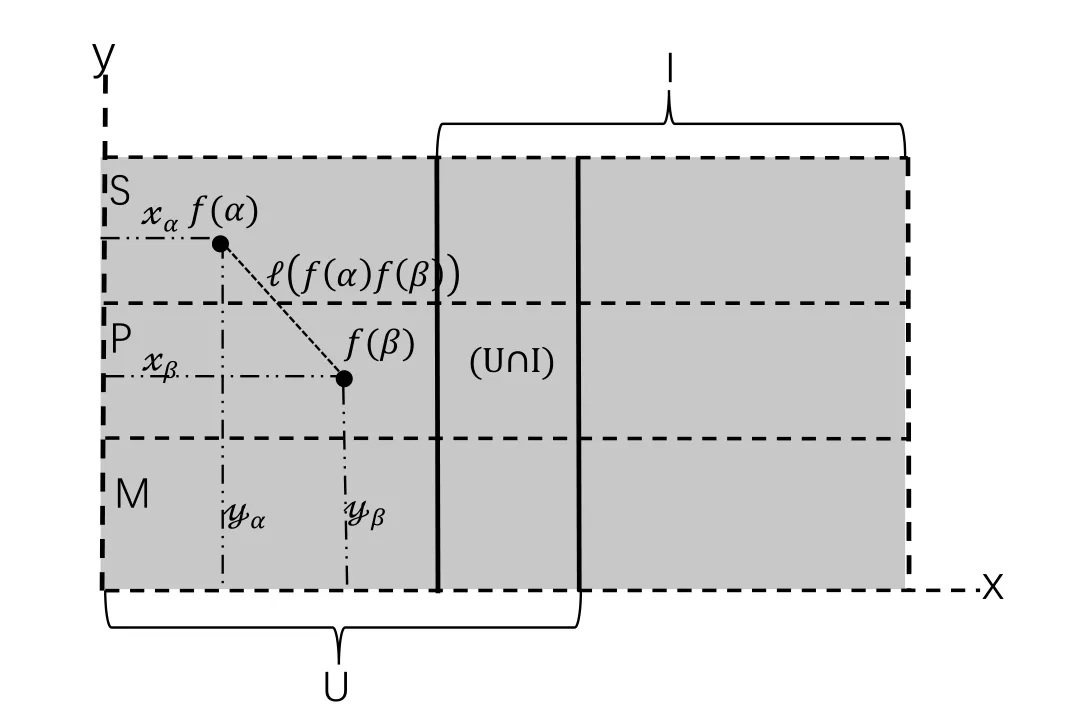
Figure 8:ε?-Pragmatic Schema
By the definition of the corresponding point and distance function,we can now give two models of the categorical exchange between the entities in(semantic)content category and the entities in contextual category.Take “f(α)” and “f(β)” are respectively the corresponding point of a semantic entity and of a contextual entity.We can then have two claims:
The two entities have animpartial exchangeiff?(f(α)f(β))=0
The two entities have apartial exchangeiff?(f(α)f(β))≠0
4.2 On Impartial Exchange
The impartial exchange describes three situations of verbal communication in which the corresponding points of semantic content entities and contextual entities coincide onε?-Pragmatic Schema.
Situation 1.One plays both roles of the utterer and interpreter,and the semantic content of a given indexical acquires a contextual interpretation in Kaplan’s sense(hereinafter “Kaplanian interpretation”),that is,the indexical finds its context for getting its semantic content in virtue of its character.It must be emphasized that Verschueren regards the utterer and interpreter as two different communicative roles.Generally,the two represent different communicative parties.However,it is entirely possible for one to play both roles at the same time.For example,when one is writing a novel,analyzing an event in a soliloquy,or reciting lines to oneself,etc.Situation 1is equivalent to the Kaplanian interpretation in the “one talks to oneself” situation.
The Impartial Exchange condition of Situation 1.The impartial exchange characterizes the Kaplanian interpretation indicated above as the coincidence of the corresponding pointsf(α) with thef(β) onε?-Pragmatic Schema,in which “f(α)” is the corresponding point of the semantic entity denoted by the uttered indexical,and “f(β)” is the corresponding point of the contextual entity provided by Kaplan’s parameters set.
The ε?-Pragmatic Schema characterization of Situation 1:?(f(α)f(β))=0 as shown as follows:
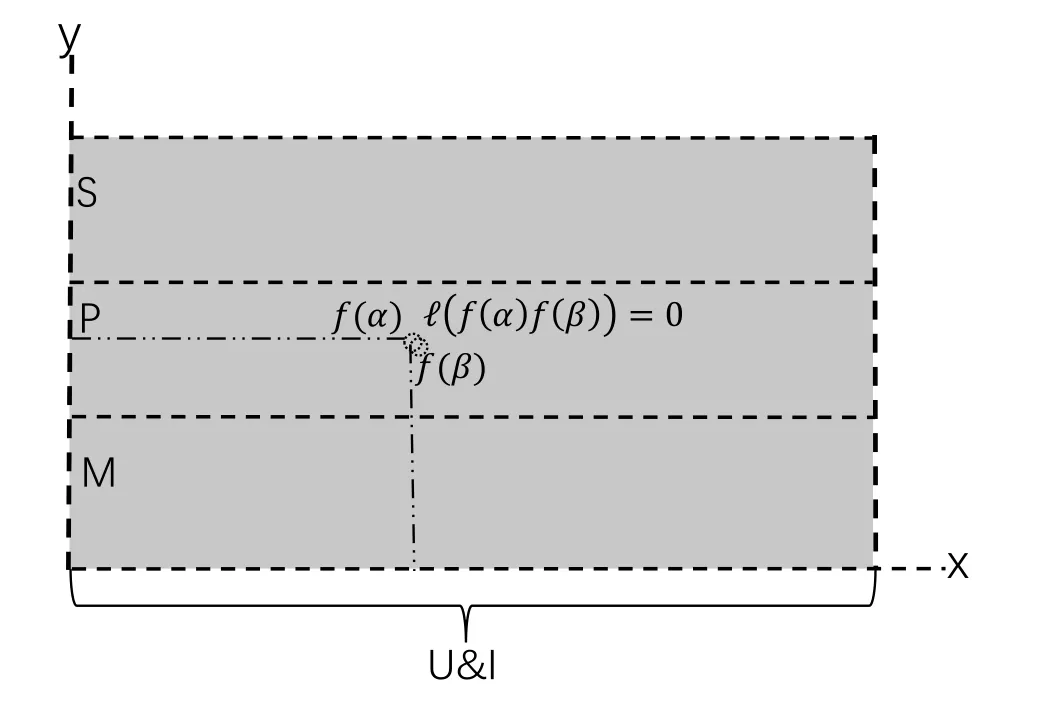
Figure 9: Situation 1 of Impartial Exchange
Situation 2.The role of utterer and interpreter(s) are played by different communicative parties.They have successfully communicated the semantic content of a given indexical.Here,“successful communication” means that all communicative parties have offered a Kaplanian interpretation of the indexical which belongs to their common ground.
The Impartial Exchange condition of Situation 2.The corresponding points of the semantic and contextual entities relative to each role of communicative parties coincide,and their coincided points coincide.All the coincided points fall within the common ground onε?-Pragmatic Schema.
The ε?-Pragmatic Schema characterization of Situation 2.Consider a specific case where there are only two communicative parties(one is the utterer and the other is the interpreter).Letf(α)andf(β)be respectively the corresponding points of the semantic content entity and contextual entity related to a given indexical on the side of the utterer.On the side of the interpreter,we give a distance functiongdefined just as thef.And we then have the corresponding pointsg(α)andg(β)onε?-Pragmatic Schema of the semantic entity and contextual entity relative to the interpreter.That is to say,upon receiving the utterance of an indexical,the interpreter carries out a contextual interpretation of semantic content of the indexical.In other words,he achieves a categorical exchange between the(semantic)content and the context for the indexical.Thus,giventhe Impartial Exchange condition of situation 2,ε?-Pragmatic Schema can characterize the condition of the successful communication6Note that Impartial Exchange only characterizes one kind of successful communications,and the others will be addressed in Partial Exchange.of semantic content of the indexical between the utterer and interpreter:
7?(f(α)g(α))=0 means that both parties have assigned the same semantic content to the indexical in question.
shown as follows:
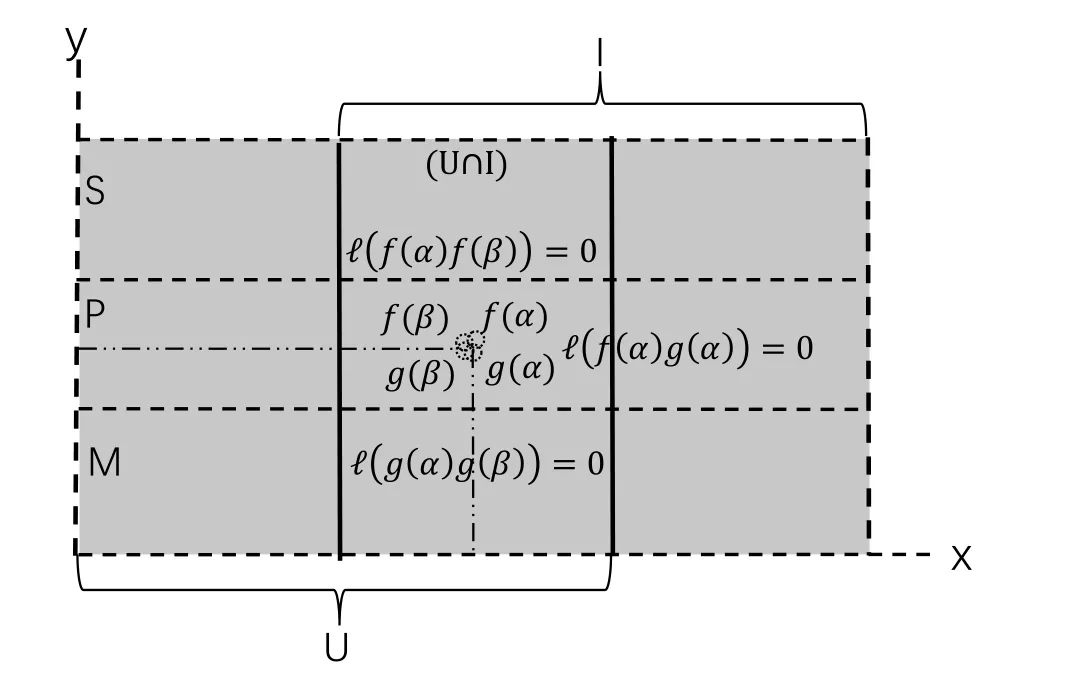
Figure 10: Situation 2 of Impartial Exchange
Situation 3.The role of utterer and interpreter(s)are assumed by different communicative parties.They fail to communicate the semantic content of a given indexical.In other words,both parties perform a Kaplanian interpretation of semantic content of the indexical,but their interpretations are out of their common ground.
The Impartial Exchange condition of Situation 3.The corresponding points of the semantic and contextual entities relative to each role of communicative parties coincide,but their respective coincided points do not coincide.And all the coincided points all fall outside the common ground onε?-Pragmatic Schema.
The ε?-Pragmatic Schema characterization of Situation 3.Similar toSituation 2presented above,we consider a specific case where there are only two communicative parties (one is the utterer and the other is the interpreter).We assume that the corresponding points relative to the utterer aref(α)andf(β)and the corresponding points relative to the interpreter areg(α) andg(β).Thus,giventhe Impartial Exchange condition of situation 3,ε?-Pragmatic Schema can characterize the condition of the failure of communication8Note that the Impartial Exchange only characterizes one kind of unsuccessful communications,and the others will be addressed in the Partial Exchange.of semantic content of the indexical between the utterer and interpreter:
Shown as follows:
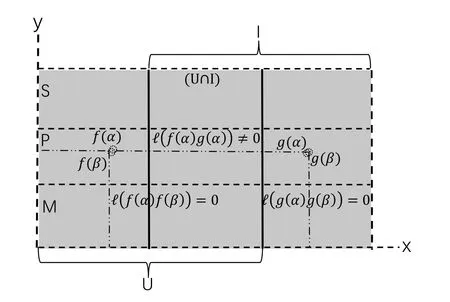
Figure 11: Situation 3 of Impartial Exchange
In Impartial Exchange we have not considered within which worlds (S,PorM)onε?-Pragmatic Schema the corresponding points would fall.As is shown,it is supposed that they all fall within the physical world.This is certainly a theoretical idealization.It may only be the case for the categorical exchange relative to pure indexicals.For true demonstratives whose determination of its semantic content inevitably involves utterer’s intention,the related corresponding points may appear in the mental world on ourε?-Pragmatic Schema.We do not go into such technical complexities for the sake of space,because they are here not the main concern.However,as regards Partial Exchange,the problem of “world” are the keys for characterizing some situations of verbal communication to which that we turn now.
4.3 On Partial Exchange
The Partial Exchange describes three situations of verbal communication in which semantic content entities and contextual entities do not coincide onε?-Pragmatic Schema.To put it differently,the actual contextual interpretation deviates from Kaplanian interpretation.
Situation 1.When an individual plays the dual role of utterer and interpreter,the contextual interpretation of semantic content of a given indexical deviates from the Kaplanian interpretation.In other words,the actual context assigning the semantic content to the expression in question deviates from the proper contextual parameter identified in Kaplanian interpretation.Four types of cases will be discussed in Situation 1,each of which represents a distinct reason for the deviation.9In Situation 1,the identification of the utterer with the interpreter renders the utterer’s intention so unequivocal for the interpreter that it does not necessitate recognition.An anonymous referee raises a valid question regarding the purpose of characterizing this situation if the paper mainly aims to examine the role of utterer’s intention in categorical exchange.Indeed,I concur that the utterer’s intention therein does not seem to cause the widely admitted difficulties.However,what is at issue here is explicitly elucidating how reference deviates from Kaplan’s interpretation.Although the utterer’s intention is definite in this case,why does reference for an indexical still diverge from Kaplan’s interpretative prediction?This can be attributed to various conditions such as spatial,intentional,operator and temporal factors(to be discussed later).Failure to meet these conditions may result in a form of deviation.
Spatial deviation.At a cocktail party,the utterer saw a seemingly familiar person among the crowd in the distance and said to himself: “I might have met him in school?” Assume that the person whom the utterer had met in school is in fact Mark.But at the cocktail party,because of complex texture of environment at the party(crowd or other spatial obstructions),the “him” the utterer saw is not Mark but John.That is to say,the utterer misrecognized John as Mark.Assume that the corresponding points of the semantic content entity and two contextual entities(which are obviously Mark and John) aref(α),f(β) andf(β1).According to Kaplanian interpretation,which is accounted for in Impartial Exchange,we would have the categorical exchange between the semantic content of “him” and the contextual entity Mark,and thus there would be an Impartial Exchange on ourε?-Pragmatic Schema,namely?(f(α)f(β))=0.However,the utterer’s misrecognition of John as Mark results in a deviation from the Kaplanian interpretation.The real categorical exchange takes place between the semantic content of “him” and the other contextual entity(John).We regard this spatially deviated interpretation as our first case ofSituation 1for Partial Exchange.Due to the fact thatf(β)andf(β1)respectively represent different corresponding points,if?(f(α)f(β))=0,then?(f(α)f(β1)) ≠ 0 which is exactly the first condition of Partial Exchange in spatial derivation case.Additionally,it should be noted that such Partial Exchange is caused by the utterer’s misrecognition,and it is in turn the physically spatial obstructions that bring about the misrecognition.Thus,this Partial Exchange is essentially due to the physically spatial obstruc-tions.Furthermore,all the semantic entities and contextual entities are supposed to be the individuals in the physical world.Given these two reasons,the Partial Exchange in this case must satisfy the second condition,namely{f(α),f(β1)} ?P.Now,we acquire two conditions of Partial Exchange inSpatial derivation10Such a deviation has both epistemological and ontological import.It is epistemological since it represents the misrecognition of the utterer,and it is also ontological since the contextual entity mistakenly identified differs from the really intended one.case:
Intentional deviation.The utterer is a child who is called Li Lei and entertains himself at home,saying to himself:“I am wreaking havoc in the Heavenly Palace with a golden cudgel in my hand,who dares to stop me!” Obviously,the utterer regards himself living in the real physical world as the fictional character Monkey King.Assume that the corresponding points of the semantic content entity and two contextual entities(which are Li Lei and Monkey King)aref(α),f(β)andf(β2).Likewise,according to Kaplanian interpretation,we would have the categorical exchange between the semantic content of “I” and the contextual entity Li Lei,and thus there would be an Impartial Exchange on ourε?-Pragmatic Schema,namely?(f(α)f(β))=0.However,the utterer intends him to refer to Monkey King,which results in a deviation from the Kaplanian interpretation.The real categorical exchange takes place between the semantic content of “I” and the other contextual entity(Monkey King).We can regard this intentionally deviated interpretation as our second case ofSituation 1for Partial Exchange.Due to the fact thatf(β)andf(β2)represent different corresponding points,if?(f(α)f(β))=0,then?(f(α)f(β2)) ≠ 0 which is exactly the first condition of Partial Exchange in intentional derivation case.Additionally,such roleplaying involves the utterer’s intention,and thus the “deviation” boils down to the utterer’s mental world.Obviously,the appearance of the contextual entity Monkey King is motivated in the mental world.In this sense,f(β2)∈M.Moreover,bothf(α) andf(β) are the corresponding points of the individuals in the real physical world.We can therefore say thatf(α)∈P.11That let f(α) ∈P must be controversial.If it is the mentally triggered contextual entity β2 that achieves the categorical exchange with the semantic entity α,which deviates from Kaplanian interpretation,why is it not f(α) ∈M? Admittedly,more need to be investigated here.However,our approach can distinguish the case in question from the clearly different kind of cases of intentional deviation:assume that the child is not in the real physical world but a character in a fiction and utters the same sentence in the fictional world.Then,we may say that the category exchange here actually occurs in writer’s mental world,and the two corresponding points f(α) and f(β2) of the semantic entity and contextual entity relative to “I” belong to the mental world,we will thus have{f(α),f(β2)}?M.Now,we acquire two conditions of Partial Exchange inIntentional derivationcase:
Operator deviation.The monster operators in some languages lead to this deviation.Schlenker([16])argues that there are monster operators in Ethiopian Amharic.If an Amharic speaker called Dawit utters: “Wang Ming believes I am a bad guy”,the contextual interpretation of “I” here will deviate from the Kaplan interpretation:the contextual entity assigned to the semantic content of “I” deviates from Dawit to Wang Ming.Therefore,the semantic content of “I” here is no longer the utterer but Wang Ming.The monster operator causing this deviation is the Amharic attitude operator “believe”.Assume that the corresponding points of the semantic content entity and two contextual entities (which are Dawit and Wang Ming) are respectivelyf(α),f(β) andf(β3).Likewise,according to Kaplanian interpretation,we would have the categorical exchange between the semantic content of “I” and the contextual entity Dawit,and thus there would be an Impartial Exchange on ourε?-Pragmatic Schema,namely?(f(α)f(β))=0.However,by the monster operator “believe”,the utterer use “I” to refer to Wang Ming,which results in a deviation from the Kaplanian interpretation.The real categorical exchange takes place between the semantic content of “I” and the other contextual entity(Wang Ming).We can regard this deviated interpretation due to the monster operator as our third case ofSituation 1for Partial Exchange.Due to the fact thatf(β) andf(β3) represent different corresponding points,if?(f(α)f(β))=0,then?(f(α)f(β3))≠0 which is exactly the first condition of Partial Exchange in operator derivation case.It can also be observed that the monster operator is the product of a specific language.If we regard this language as a manifestation of a particular social culture,then it is viable to say that the interpretative deviation in question originates from the utterer’s social world.Additionally,although Dawit and Wang Ming are both individuals in the physical world,in order to show the socio-cultural reason for this interpretive deviation,we letf(α)∈Pandf(β3)∈S.12That let f(α)∈P and f(β3)∈S must also be controversial.If the contextual entities in this case are all physical individuals,why is it not{f(α),f(β3)} ?P ? And if the deviated interpretation of semantic content of “I” is caused by the monster operator of the language in a particular society,why is it not{f(α),f(β3)}?S? Our reply is this.We may have two aspects to consider for which world the corresponding points fall on ε?-Pragmatic Schema.First,the ontological status of entities represented by the corresponding points(is it socially constructed,physically existing or mentally triggered?).Second,the reason of interpretative deviation.In above two cases,intentional and operator deviations,we all let f(α) ∈P,because it is obvious that the ontological status of the semantic content entity consists in their physical feature from an extensional point of view.And we let f(β2) ?M and f(β3) ?S,because we attempt to highlight(in terms of contextual entities)the reason why the related contextually interpretative deviation takes place.Indeed,whether such theoretical considerations are always feasible depends on further investigation.Now,we acquire the two conditions of Partial Exchange in Operator derivation case:
Temporal deviation.Wang Ming accidentally opened a previous voicemail he had recorded: “Wang Ming is not in the office now,please leave a message after the‘beep’” The “now” when the previous recording is again turned on(t2)is no longer the “now” when Wang Ming originally did the recording(t1).Assume that the corresponding points of the semantic content entity and two contextual entities(which aret1andt2)are respectivelyf(α),f(β)andf(β4).Likewise,according to Kaplanian interpretation that “now” refers to the moment (t1) when it was uttered,we would have the categorical exchange between the semantic content of “now” and the contextual entityt1,and thus there would be an Impartial Exchange on ourε?-Pragmatic Schema,namely?(f(α)f(β))=0.However,due to this temporal deviation,“now” is accidentally produced to refer tot2,which results in a deviation from the Kaplanian interpretation.The real categorical exchange thus takes place between the semantic content of “now” and the other contextual entity (t2).We can regard this deviated interpretation due to this temporal deviation as our third case ofSituation 1for Partial Exchange.Due to the fact thatf(β)andf(β4)represent different corresponding points,if?(f(α)f(β))=0,then?(f(α)f(β4)) ≠ 0 which is exactly the first condition of Partial Exchange in temporal derivation case.Further,if thex-coordinate is interpreted as a continuous time series composed of natural numbers(ignoring time granularity),we then havet1 We now show the four types of cases ofSituation 1of Partial Exchange on ourε?-Pragmatic Schema,in whichf(a)in every case is distinct: Figure 12: Situation 1 of Partial Exchange We must admit that there may be countless cases relative to the first situation that deviate from Kaplanian interpretation.Whether these four types of cases can exhaust the first situation of Partial Exchange needs to be tested.The first situation of Partial Exchange is the basis of the latter two situations.The main difference lies in whether these four types of Partial Exchange occur in common ground. Situation 2.Similar to the second situation of Impartial Exchange,the second situation of Partial Exchange characterizes successful communication.“Successful communication” here means that all deviated interpretations in the first situation of Partial Exchange become the common ground of all parties in communication.For the sake of space,we only take the Spatial deviation for instance.As is just shown,the utterer mistakenly uses “him” to refer to John,and in thisSituation 2of Partial Exchange,it is the common ground between the utterer and interpreters that “him” refers to John,even if it is the mistaken referent and it is also conceivable that the interpreters do not know that a spatial deviation happens on the utterer’s side. The Partial Exchange condition of Situation 2.On the utterer’s side,the corresponding points of the communicated semantic content and contextual entities do not coincide(which is theSpatial deviation in Situation 1).On the interpreter’s side,the corresponding points of the communicated semantic content and contextual entities coincide with the utterer’s points respectively.And these two pairs of coincided points fall on the common ground. The ε?-Pragmatic Schema characterization of Situation 2.We assume that the corresponding points relative to the utterer aref(α) andf(β1),the corresponding points relative to the interpreter areg(α) andg(β1),and there is only one interpreter.Then,giventhe Partial Exchange condition of situation 2,we can give theε?-Pragmatic Schema characterization of successful communication: shown on ourε?-Pragmatic Schema: Figure 13: Situation 2 of Partial Exchange Situation 3.The third situation of Partial Exchange characterizes unsuccessful communication.That is,the four types of deviated interpretation in the first situation of partial exchange do not fall on the common ground.In other words,the interpreter has not succeeded in identifying the utterer’s(deviated)interpretation of indexicals,and his contextual interpretation of the expression is inconsistent with the utterer’s(deviated) interpretation.Still take Spatial deviation for instance.Suppose there is an interpreter close to the utterer.When the utterer uses “him” to mistakenly refer to John,and the interpreter thinks that the utterer uses it to refer to David who is very close to John in the distance.Therefore,the communication is unsuccessful. The Partial Exchange condition of Situation 3.On the utterer’s side,the corresponding points of the communicated semantic content and contextual entities do not coincide(which is theSpatial deviation in Situation 1)and fall outside the common ground(namelyP ∩(U-(U ∩I))).On the interpreter’s side,the corresponding points of the communicated semantic content and contextual entities mutually coincide14Indeed,in this Situation 3,the interpreter is inconsistent with the utterer in terms of their contextual interpretation of the semantic content of “him”.The utterer uses it to refer to John(even if it is the result of a spatial deviation),the interpreter thinks that it is used to refer to David.However,the interpretation on the interpreter’s side does not involve the deviated interpretation we define here.The deviated interpretation is just the utterer’s deviation from Kaplanian interpretation of the semantic content of indexicals,and it does not have to do with the interpreter’s misrecognition of the utterer’s interpretation.Generally,the interpreter would presuppose that the utterer gives a Kaplanian interpretation of indexicals and recognize it as the common ground since it is either unpredictable or totally unknown for the interpreter whether the utterer’s interpretation is deviated.That is to say,the interpreter presupposes that the utterer would achieve the referential action by an indexical only in virtue of its character and his referential intention unaffected by any aforementioned deviational factors.Thus,such interpreter’s interpretation of the uttered indexical can be seen the one which belongs to the case of Impartial Exchange.That is why we say here that,on the interpreter’s side,the corresponding points of the communicated semantic content and contextual entities mutually coincide.and fall outside the common ground(namelyP ∩(I-(U ∩I))). The ε?-Pragmatic Schema characterization of Situation 3.We still assume that the corresponding points relative to the utterer aref(α)andf(β1).They represent the semantic content entity and the contextual entity “John”.The corresponding points relative to the interpreter areg(α) andg().They represent the semantic content entity assigned by the interpreter and the contextual entity “David”.And there is only one interpreter.Given the Partial Exchange condition of situation 3,ε?-Pragmatic Schema can characterize the condition of the failure of communication: shown as follows: Figure 14: Situation 3 of Partial Exchange On the basis of Verschueren’s pragmatics and his Context Diagram,we have established “ε-General Condition” and “ε-Pragmatic Schema” which provide a kind of pragmatic account(beyond lexical explanation)of the category exchange between semantic content entity and contextual entity.In addition,by defining concepts such as “corresponding points” and “distance function” onε?-Pragmatic Schema,we have proposed two specific models of category exchange: Impartial Exchange and Partial Exchange.We have also used these two models to analyze several situations of verbal expression and communication.Moreover,these two models help us to gain a new technical understanding of the concept of “contextual interpretation of the indexical semantic content” which meansthe impartially and partially categorical exchange between semantic content entity and contextual entity relative to the indexical.Obviously,there are many issues to be discussed over this work.Six of them will be briefly examined here: About a philosophical presupposition.Theε-General Condition andε?-Pragmatic Schema emphasize the mutual “bundling” of semantic content entities and contextual entities.They are inseparable from each other.Semantic content is fully “contextualized”.There seems to be involving a very strong philosophical presupposition:Travis’s occasionalism([20]).Semantics has no place without context.However,we focus only on the semantic content of indexicals,and it is inseparable from context,which is presupposed by all theories of indexicals.Therefore,occasionalism has little to do with our concern.Additionally,the reason why elements such as utterer,place,possible world,and etc.can be regarded as the entities in contextual category is that they play a semantical role in providing the referents for indexicals.If we talk about these elements without considering such a role,they are just utterer,place,and possible world themselves.They will not be treated as entities in contextual category.In this sense,contextual entities are inseparable from semantic content categories. About the notion of context.The categorical exchange models presuppose the Verschueren’s three-worlds notion of context.However,the issue of category exchange is raised from Kaplan’s notion of context: context is parameters-set.Does this divergence in understanding context lead to a digression when we discuss the categorical exchange? This question presents the reason why it is necessary to discuss the compatibility of Kaplan’s context with Verschueren’s context.Our answer:no,it is not since the two notions of context can be aligned.Just as Stalnaker’s analysis ([19],pp.25-26) of the compatible relationship between the common ground and parameters-set context,the “three worlds” notion of context can be part of the parameters-set notion of context.A possible world with the utterers,places,and time can be divided into three aspects: the social,the physical and the mental.Conversely,the parameter-set context can also be a subset of the three worlds.The three worlds contain multiple parameter-sets each of which is composed of countless parameters.In this sense,they are not mutually exclusive.15As noted by an anonymous referee,it may be problematic to define the intersection between the semantic content assigned by the utterer and that assigned by the interpreter using Stalnaker’s common ground,as his notion of context appears distinct from our definition of context as three-world entities.First,I agree that they differ,but they are not incompatible.The compatibility between them is analogous to the compatibility between common ground context and parameters-set context.The three-worlds context can be part of the common ground: those entities in the three-worlds are epistemologically mutual transparent to interlocutors;conversely,the common ground can be part of the three-worlds context:those epistemologically mutual transparent entities lie in certain(physical,social or/and mental)worlds.Second,Stalnaker([17])indeed distinguishes between context as common ground and context as parameters-set,but he finds Kaplan’s treatment of context unsatisfactory due to the absence of an explicit theory “about the epistemic status of such a context” (see [17],p.109).That is one of the reasons why “common ground” is introduced.In this sense,though Stalnaker himself gives us a caveat that we must be clear about which notion of context we are considering as regards several issues([19],p.26),it does not mean that the two notions are incompatible. About the interpretation of x-coordinate of our ε?-Pragmatic Schema.As we have said,we interpret thex-coordinate as a continuous time series composed of natural numbers.This is not ad hoc forTemporal deviation.It can also play a theoretical role in showing the dynamics of the categorical exchange.As time goes by,the corresponding points of semantic content and contextual entities and their exchange will change.For the utterance “I am not who I was in the past”,there are two categorical exchanges between the semantic content entity and contextual entity relative to the indexical “I”.One happens at “now”(t2)and the other at “past”(t1).Therefore,theε?-Pragmatic Schemacan characterize these two exchanges in virtue of this theoretical role of the x-coordinate.Similarly,forSpatial deviation,if the utterer says to him,“I might see him somewhere before”,and then immediately follows,“No,it is him”.Assume that,by saying the second “him”,the utterer eventually does see Mike whom she saw before,then there are successively two categorical exchanges between the semantic content entity and contextual entity relative to the indexical “him”.The second is obviously a correction to the first.We can exhibit this correction by the time series on the x-coordinate ofε?-Pragmatic Schema. About the interpretation of y-coordinate of our ε?-Pragmatic Schema.We propose to understand they-coordinate as a code sequence,and every code is like a G?del number.Every semantic(contextual)entity in the social,physical,or mental world is mapped onto a code.Obviously,this proposal needs more investigations which go beyond the scope of this paper.A closely related problem is this.Our definition of “corresponding points” depends on the coordinate values onε?-Pragmatic Schema,and the values in turn determine the calculation of distance function between corresponding points(as mentioned earlier,if the result of calculation is 0,then an Impartial Exchange is obtained,otherwise it means a Partial Exchange).Thus,if the coordinate values cannot have a clear intuitive explanation,it will be very difficult to understand the corresponding points and their distance.A possible response is that,intuitively,the categorical exchange will bring out “distance difference” if different contextual entities are exchanged with the semantic content entity.InSituation 2of Partial Exchange mentioned above,if the interpreter misunderstood the utterance of “him” as a person he met on the way to the party rather than David he saw at the part,we would think that this is a “far more” wrong understanding.Of course,the “distance difference” connoted by the word “far more” is intuitively just a metaphorical description of the degree of the misunderstanding.However,it is intended that we can grasp this intuition theoretically.More importantly,the distance formula used to describe the category exchange does not mean that this pragmatic phenomenon can be completely calculated in a mathematical way,but we still expect our theoretical characterization for such a phenomenon to be formulated in a relatively precise framework.This is our basic idea for using this simple mathematical tool. About prediction of where the corresponding points fall.Our characterization of the categorical exchange must involve selections of the corresponding points in the related areas(namely the corresponding setsS,P,M,U,I)ofε?-Pragmatic Schema.Although we can give the conditions of Impartial Exchange and Partial Exchange,predicting the selections to a certain extent,however,these conditions can only predict in which area a corresponding point will fall.It is difficult to predict a specific location of a corresponding point in this area.For instance,inSituation 3 of Partial Exchange,we can predict that{f(α),f(β1)}?(P∩(U-U∩I)),but we cannot predict in which specific locations in this area these two corresponding points occupy.Of course,it remains to be investigated whether this prediction is important and what its pragmatic implications are. About the role of utterer’s intention.As is indicated at the outset of Section 3,our pragmatic account,in contrast to the lexical one,is expected to specify the significant role of utterer’s intention in affecting the categorical exchange.To some extent,this purpose is realized in three ways.First,the initial consideration in our conceptual framework revolves around the utterer’s intention.This is mainly exemplified by the three-worlds notion of context in which the mental world accommodates both the utterer’s intention and the assessment of interpreter’s intention([21],p.89).This initial conceptual framework explicitly presents the utterer’s intention in relation to the categorical exchange.Of course,we acknowledge that further theoretical work is required to explore the relationship between the mental world and the utterer’s intention,but such a conceptual framework represents an advancement compared to the lexical account.Second,in our analysis of Impartial Exchange,although we primarily focus on Kaplanian pure indexicals for the sake of technical simplicity,it becomes apparent that when considering the cases where the related corresponding points fall within the mental world(M),both utterer’s and interpreter’s intention can be straightforwardly made explicit.Admittedly,making explicit the role of intention in such a way may appear somewhat ad hoc;however,it is crucial to note the distance function in our account.To illustrate this point further,let us considerSituation 3of Impartial Exchange.InSituation 3,we characterize the conditions under which the communication of indexical content between the utterer and interpreter fails,with one such conditions being?(f(α)g(α))≠0.This condition can thus be employed to compare the role of the utterer’s intention by evaluating the value of the distance function in two scenarios where all relevant corresponding points lie within the mental world(M): if?(f(α)g(α)) is greater in magnitude than?′(f(α)g(α)) in the second scenario,it becomes more challenging to discern the utterer’s intention in comparison to that in the latter scenario.It is undeniably a preliminary theory for elucidating the role of utterer’s intention,but from our perspective,it holds theoretical interest.Third,in our analysis of Partial Exchange,particularly when intentional deviation occurs,the role of utterer’s intention is clearly delineated in virtue of distance function and the correspondent points.However,as we have emphasized,our pragmatic approach only aims to address the issue of utterer’s intentionto a certain extent: we do not intend to fully specify how the utterer’s intention operates in the categorical exchange;Nevertheless,our theoretical framework does serve to make this role more explicit.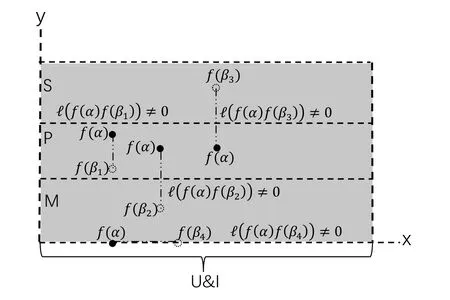

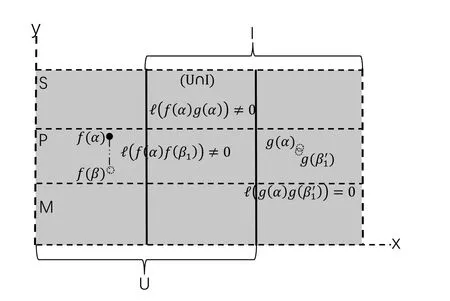
5 Discussion
- 邏輯學(xué)研究的其它文章
- On Types over p-adically Closed Fields
- The Interaction of Everyday Discourse and Professional Discourse—A Study of Generalized Argumentation in the Medicalization of Sleep*
- Sahlqvist Correspondence Theory for Modal Logic with Quantification over Relations*
- Logics of Non-actual Possible Worlds*
- A Logic for Probabilities of Successive Events*

